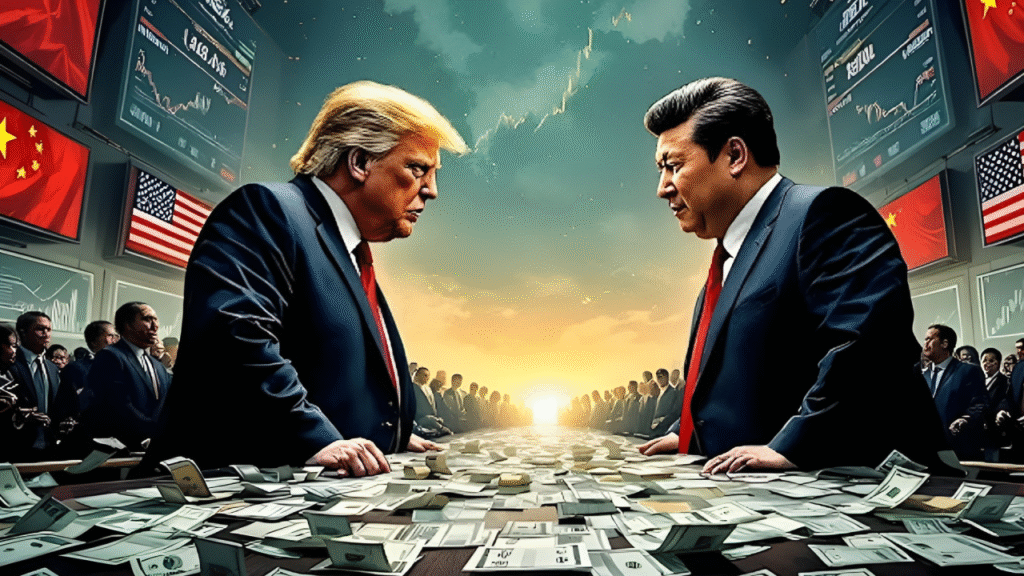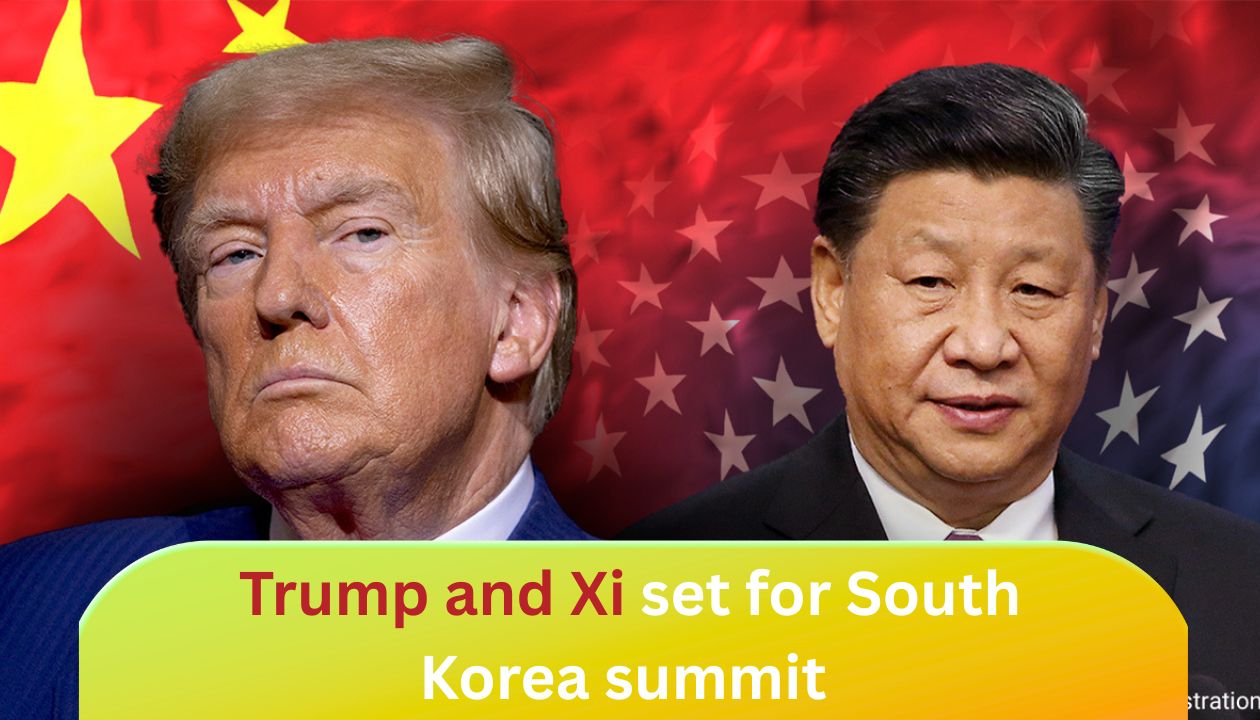In a significant move toward de‑escalation, Donald Trump and Xi Jinping are expected to meet in South Korea in late October to address trade tensions between the U.S. and China. The meeting follows China’s imposition of stricter export controls on rare earth elements, and Trump’s threat to impose 100 % tariffs on Chinese goods beginning November 1.
The Context of Rising Tensions
China’s Rare Earth Export Controls
China recently expanded export controls on rare earth elements, requiring foreign firms to obtain licenses even when Chinese firms are not involved. This regulatory shift drew strong criticism from the U.S., which views it as a strategic move to constrain high-tech supply chains.
Rare earths are critical in semiconductors, defense systems, green technologies, and consumer electronics. Locking down exports could give China leverage in negotiations, especially as many U.S. and allied manufacturers depend on Chinese sources.
U.S. Tariff Threats & Political Backdrop
Trump has threatened to implement 100 % tariffs on Chinese exports starting November 1 if tensions are not resolved. The U.S. move would escalate the trade war significantly, potentially provoking retaliatory action from China and jolting global markets.
Treasury Secretary Scott Bessent noted that communication between the two sides has increased, and staff-level talks are already underway ahead of the summit. He affirmed that the meeting remains “on track.”
Diplomatic Preparations and Timing
The summit is likely to coincide with the Asia‑Pacific Economic Cooperation (APEC) forum taking place in South Korea. Trump and Xi had plans to meet around that timeframe, and the setting provides a formal backdrop for global leaders.
Diplomatic efforts in recent weeks have focused on reducing rhetoric and opening negotiation channels, even amid firm stances on tariffs and tech control.
Also Read: India–US Relations in 2025
Stakes for Global Trade and Markets

Supply Chain Disruption & Tech Access
Any disruption in rare earth exports or retaliatory trade restrictions could ripple through global supply chains, especially in advanced technology sectors. Companies depending on critical minerals or components may face bottlenecks or cost increases.
Market Volatility & Investor Sentiment
Global equity markets have already shown sensitivity to trade rhetoric. A sudden tariff escalation would likely trigger sell‑offs, while even tentative agreement or signals of compromise could boost investor confidence.
Strategic Realignments & Alliances
The summit’s outcome may influence how other nations position themselves amid U.S.–China rivalry. Countries in Asia, Europe, and the Indo-Pacific region could reassess trade, investment, and security alignments based on signals from the summit.
Possible Scenarios & Outcomes
Scenario 1: A Ceasefire in Trade War Rhetoric
If Trump and Xi commit to rolling back tariff threats, loosening export licensing rules, and committing to more dialogue, markets would likely respond positively. However, deep trust deficits remain.
Scenario 2: Partial Agreement + Side Deals
The two leaders may announce limited concessions — such as easing licensing burdens for certain sectors or agreeing to joint oversight—while deeper disputes (e.g., IP, subsidies) remain unresolved.
Scenario 3: Hardline Posturing and Escalation
If no compromise is reached, Trump’s threatened tariffs may be enacted, prompting China to retaliate. The resulting escalation could propagate global trade disruption and sanctions cycles.
Voices, Reactions & Cautions
Economists warn that even the presumption of a successful summit is not enough — implementation will be key. According to analysts, China’s leverage in rare earths gives it latent strength, but the U.S. holds countervailing power through financial sanctions, influence among allies, and control over parts of high tech supply chains.
Some market strategists caution that preceding months of uncertainty may have already priced in partial outcomes; still, surprises remain possible.
True Peace Beyond Agreements
While politics, trade, and diplomacy play out in the external world, Sant Rampal Ji Maharaj teaches that true harmony arises from inner transformation and higher moral awareness. The gathering of global leaders may ease tensions temporarily, but permanent peace—whether between nations or within the human heart—requires spiritual wisdom and ethical conduct. From the Satgyan lens, external treaties and deals are useful yet secondary; true resolution comes when individuals and societies align with truth, compassion, and timeless values.
What to Watch After the Summit
- Official communiqués or joint statements
- Changes in U.S. tariff schedules or China export licensing
- Market reactions especially in commodity, tech, and financial sectors
- Signals from other major powers (EU, Japan, India)
- Follow‑through in enforcement, dispute mechanisms, and verification
The meeting between Trump and Xi in South Korea represents a pivotal moment. Whether it ushers in a turning point in U.S.–China relations or simply postpones confrontation will depend on details, commitment, and execution.
Next Steps for Observers
- Monitor official statements and policy announcements in the days following the summit
- Assess whether tariff threats are withdrawn or modified
- Watch commodity and tech market moves, especially rare earths
- Evaluate responses from third‑party countries and multilateral institutions
FAQs: Trump and Xi to meet
Q1: When and where will Trump and Xi meet?
They are expected to meet in South Korea in late October, likely aligned with the APEC summit.
Q2: Why are China’s rare earth export controls significant?
Rare earths are essential for electronics, defense, and green tech. China’s controls could constrain supply globally and give strategic leverage in trade negotiations.
Q3: What will the 100 % tariffs threatened by the U.S. target?
Trump threatened to impose 100 % tariffs on Chinese goods if the dispute is not resolved by November 1, which would be a dramatic escalation in the trade war.
Q4: What risks do markets face from this summit?
Markets could face volatility, particularly in tech, commodity, and export‐dependent sectors. Uncertainty and escalation would likely cause negative investor sentiment.
Q5: Can this meeting resolve deeper structural issues?
Unlikely in one summit. While agreements or de‑escalation are possible, deeper issues like intellectual property, subsidies, and geopolitical rivalry will require sustained negotiation, verification mechanisms, and trust building over time.










